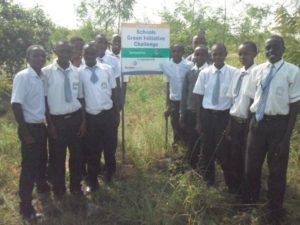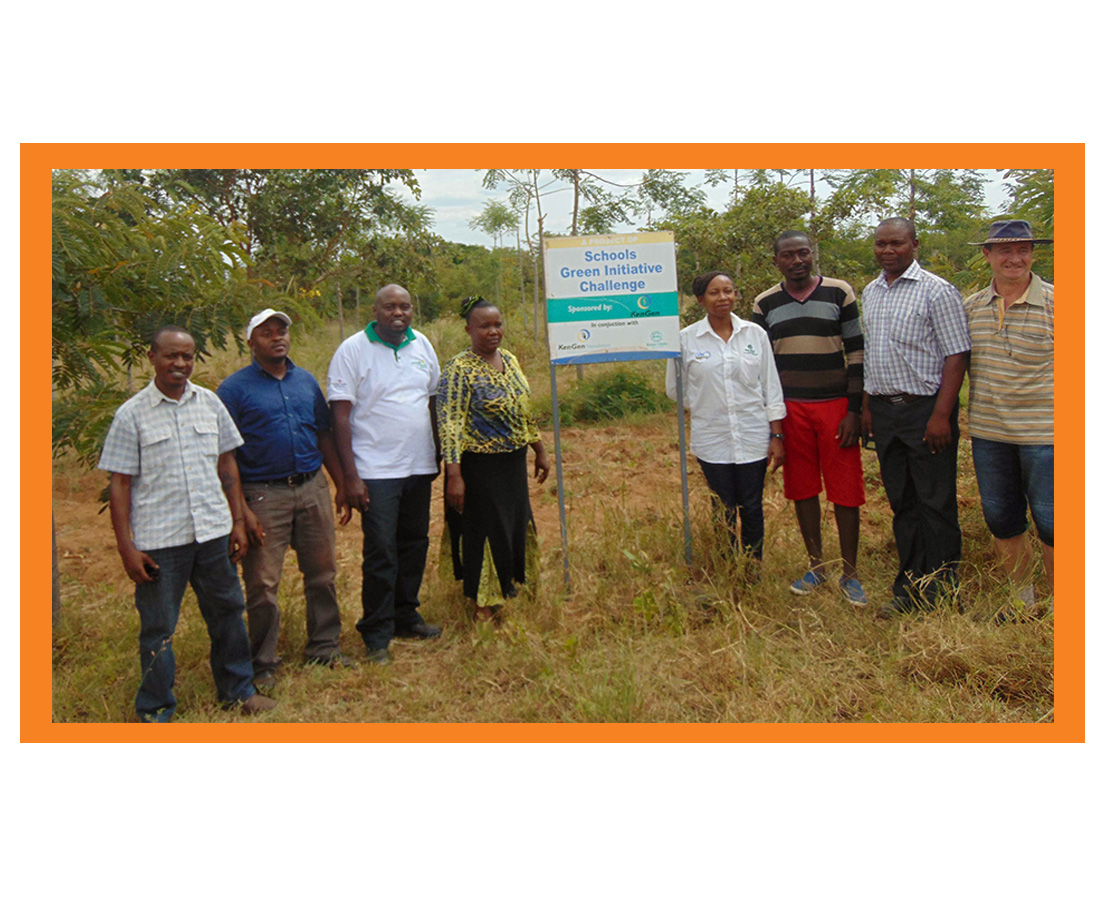Train Youth in Environmental Protection

A section of St. Martin Kaewa Secondary School Environment Club at their woodlot. The students undertook the “greening” competition to emerge the winner of the pilot afforestation competition.
Kenya has a relatively low forest cover at only 6.99 per cent of its territory, which falls short of the required standards by the United Nations Environmental Programme (UNEP). Article 69 of Kenya’s Constitution establishes that, “the State shall work to achieve and maintain a tree cover of at least 10 per cent of the land area of Kenya.”
Environment and natural resources in Kenya are valuable national assets that must be sustainably managed. They offer a range of benefits and opportunities for local and national economic development.
READ St. Martin Kaewa’s Journey to becoming GIC Champions
Trees and forests make vital ecological, social and economic contributions in terms of water storage and purification, river flow regulation, flood mitigation, recharge of groundwater, reduced soil erosion and siltation and conservation of biodiversity. Forests also support key economic sectors including energy, tourism, agriculture and industries.
In the past, environmental conservation efforts have faced numerous challenges such as rapidly growing population, habitat destruction, overgrazing, deforestation, pollution, unsustainable harvesting of natural resources and poor waste management. These challenges can be addressed through public and private partnerships.

